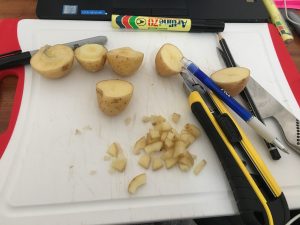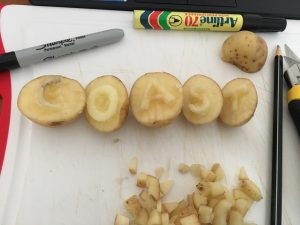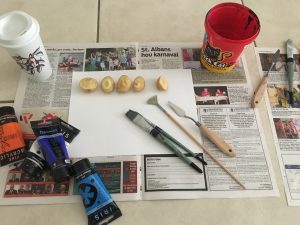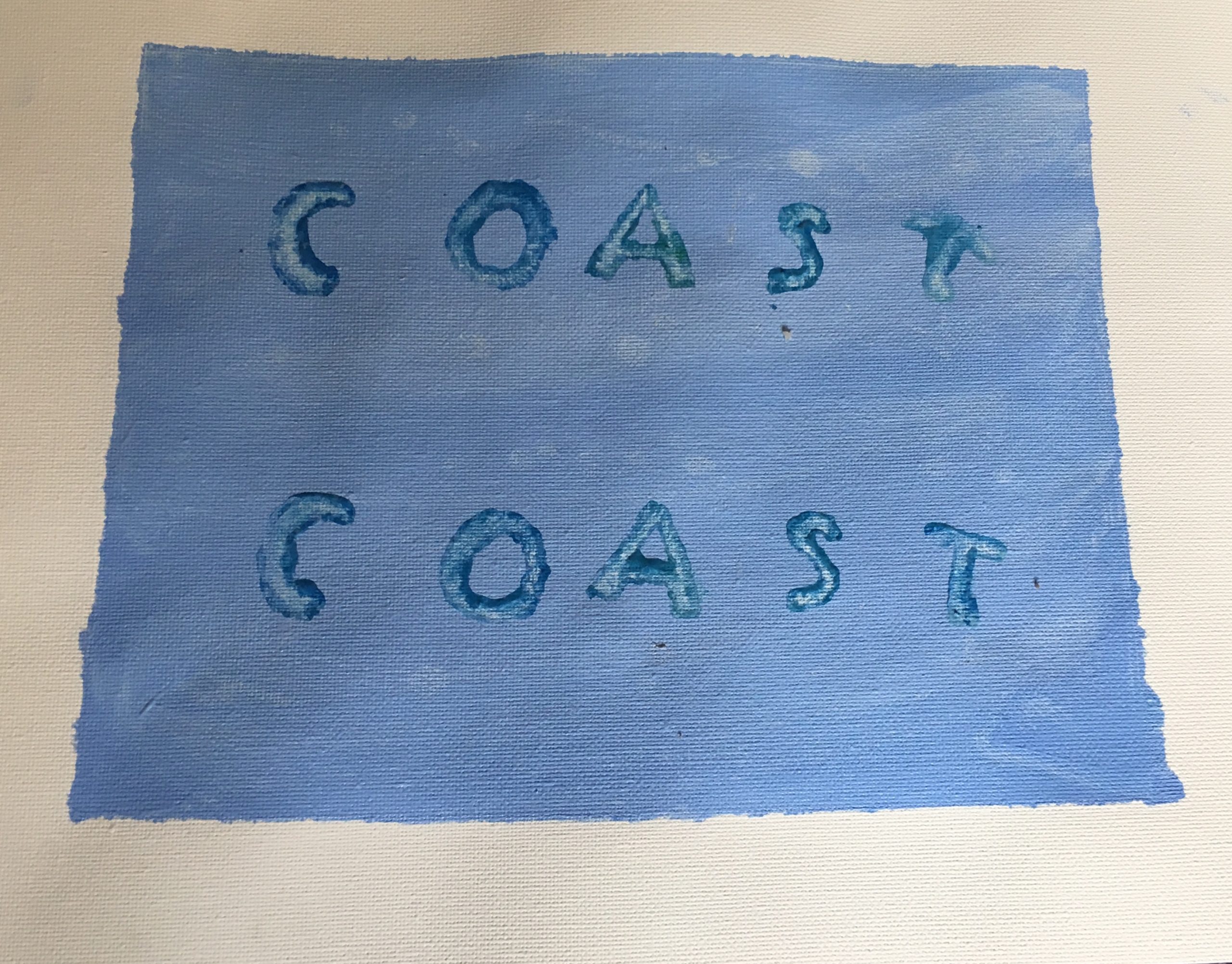I wanted desperately to do this task because it reminded me of a school activity I did years ago when I was learning about how writing developed in different civilizations and had to do a lino print. From what I can remember, my lino print was far easier to do than this task as it took me about 50 minutes to carve my first set of baby potato stamps. You’ll see from my pictures I made a mistake in my first attempt to create letter stamps for the word “coast*”, which I only caught onto when I started with the actual printing (I didn’t carve out the reverse of the letter “s” so when I stamped my initial version of this stamp, it gave the mirror image of the letter that I wanted). No matter, I got them made but there are some other struggles in the process that should also be highlighted- like the video tutorial I tried to trace my letters with a sharpie to make the cutting easier, which didn’t work at all (re-watching the video I realized I forgot to dry the potato with paper towel before trying this)! I tried a different marker, a pen and finally just used a pencil to carve an outline of each letter before using a carpenter knife to cut out the shape I had traced.



Looking at the two prints, I think they turned out okay. There is a big space between the “c” and “o” letters, which were due to the size of the potatoes that I had aligned with markings next to one another to get my two prints (my own alignment technique). The letter “t” in my first word print smudged a bit but I think it is legible even though there is no doubt that it would have been thrown out by the monks in their scriptoria.

Working on this activity, I found the words spoken by Paul Collier true when he demonstrated the working of the letterpress in the video included in our module this week. Using a letterpress or potato stamps “requires a greater degree of consideration” than had I done the same task using a word processor and printed the document on lets say a laser printer. The mechanization of writing that we utilize today has definitely taken away some of the planning and organization that was needed with this kind of printing. The quote mistakenly attributed to Marshall McLuhan but which rings true to his ideas on communication and technology summarizes this: “we shape our tools, and thereafter our tools shape us” (the words belong to John Culkin, a close friend of McLuhan). We are now at the stage where we shaped our printing methods by developing the computer and printing equipment that can produce documents in a matter of seconds and in the process it has taken over the organization and the “thinking” once associated with printing for us. In that way it has shaped us too as we now only concentrate on the meaning that we want to convey with our words and we leave the printing to the machines.
*The word “coast” has a lot of meaning for me, I picked it for its use as a noun- a place where I feel most at peace and also the verb- to describe how I view my daily movement at the moment, simply coasting forward without much purpose or direction (I wrote more about this word in Option 1 of the task).
Culkin, J. (1967, March 18). A schoolman’s guide to Marshall McLuhan. Saturday Review, 51–53, 70–72.
I was excited also with the prospect of revisiting a childhood activity. Potato printing was fun! And apple printing except your only needed to slice it in half. This was definitely more difficult! Your quote of Paul Collier and printing”requires a greater degree of consideration”stood out for me and makes me wonder how this changes the value of the finished product. Also, with the ease of writing on computers, will there be a tendency to easily throw word out to the world with less thought (I now think of some post on social media). I can really appreciate the thought that went into your printing a word that held meaning to you, this as much as the printing seemed to be a significant part of the task.
Hi Carla,
It’s interesting comparing this task to the speech-to-text task. This one takes a great deal of time to create a very small amount of content/text, whereas the speech-to-text creates content/text extremely quickly. This task requires careful planning and attention, whereas the speech-to-text can be done off-the-cuff. Despite these dramatic differences in speed and consideration required, both processes ended up with errors, mistakes, and the desire for editing!